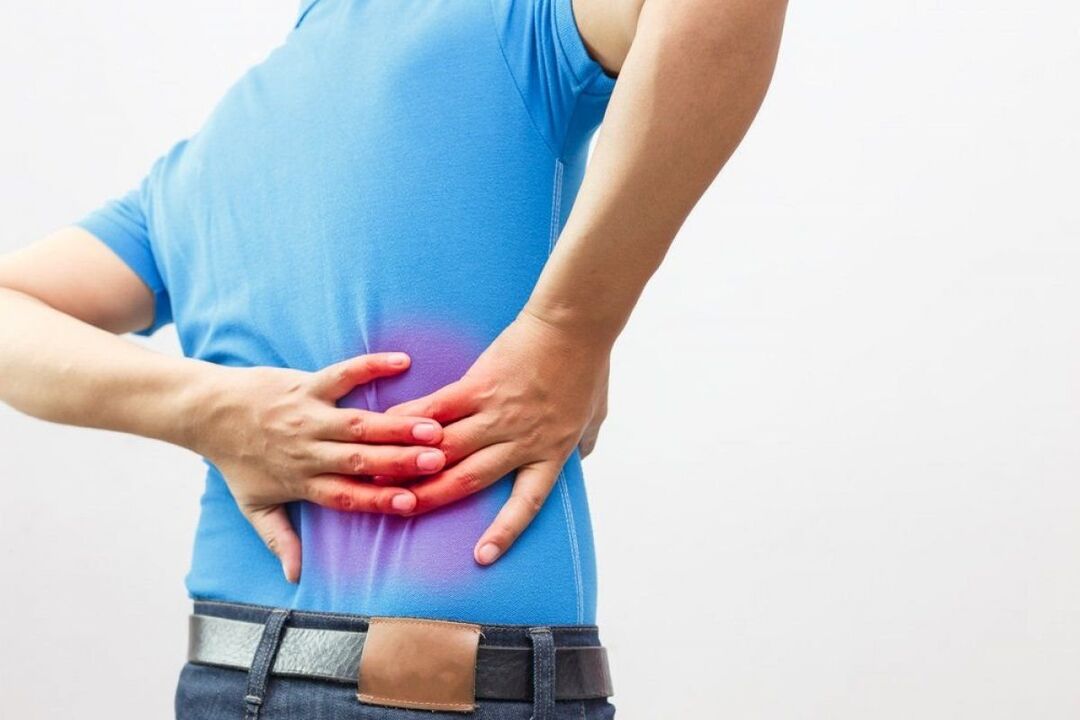Back pain often occurs after sudden movements or heavy lifting. If your back hurts constantly, this is a symptom of an illness. The cause of back pain is diagnosed and treated by a neurologist. The disease is successfully treated with conservative methods.

What you need to know about back pain
Back pain is also called dorsalgia. It periodically bothers every second person. Most often, the pain is localized in the lumbar region. As a rule, it occurs against the background of existing changes in the spine. Depending on the type of disease, the pain can be temporary or permanent. Constant pain is a sign of a serious disease and without timely treatment, it can lead to spine surgery.
When you go to the doctor
Do not delay a visit to a neurologist if you notice the following symptoms:
- Acute back pain does not go away within 2-3 days;
- chronic pain lasts more than a week without improvement;
- pain appears suddenly, for no apparent reason;
- pain occurs regularly after injury;
- back pain radiates to legs, knees, feet.
elevated temperature; limited mobility of arms or legs; feeling of numbness in the limbs; severe changes in blood pressure; pain relievers do not help relieve pain; loss of consciousness occurs; there are problems with the functioning of internal organs; there are signs of intoxication; the bleeding started.
The risk factors are:
- work related to the computer or driving, heavy physical activity, stress;
- intensive training in the gym without the supervision of a trainer;
- working in a forced position while sitting or standing;
- overweight.
Why does my back hurt?
The causes of back pain are different. They are caused by the following diseases:
- osteochondrosis, spondylosis, spondyloarthrosis;
- scoliosis, kyphoscoliosis;
- protrusion or herniation of an intervertebral disc;
- radiculitis or lumbago, inflammation of the sciatic nerve;
- spinal stenosis;
- spine instability and fractures;
- intercostal neuralgia;
- overload, hypothermia or bruising of the back muscles;
- damage to the ligaments of the spine;
- myositis.
Pregnancy and back pain
How to identify a disease according to the type of pain
Different diseases cause different types of back pain. It can be acute, chronic, painful, stabbing, with or without conduction (radiation).
Diagnostic methods
Clinic specialists will accurately determine the cause of back pain using the following diagnostic methods:
- MRI. Magnetic resonance imaging
- Ultrasound examination (ultrasound)
- Electrocardiogram (ECG)
- Laboratory research
Methods for treating back pain
Doctors in the modern clinic use many non-surgical methods: from gentle massage techniques and osteopathy to laser and physiotherapy. To ensure that the treatment is as effective as possible, we offer each patient a set of individual procedures using medications only to relieve pain at the beginning of the course.
- UHF resonance wave therapy
- Rehabilitation on the Thera-Band exercise machine
- Joint and spinal block
- Drug treatment
- Shock wave therapy
Diagnostic methods
Specialists will accurately determine the cause of back pain using the following diagnostic methods:
Methods for treating back pain
Doctors in a modern clinic use many non-surgical methods: from soft massage techniques and osteopathy to laser and physiotherapy. To ensure that the treatment is as effective as possible, we offer each patient a set of individual procedures using medications only to relieve pain at the beginning of the course.
Clinics will help you get rid of pain in the back area, relieve swelling and inflammation in the affected area, normalize metabolic processes, strengthen the back muscles and restore the normal position of the spine. Freedom of movement will return to you, you will feel a sense of momentum.
As part of the rehabilitation, for each patient, the clinic specialist designs a personal physical activity plan for independent exercises aimed at consolidating treatment results and disease prevention.
What to do for back pain
If you have severe back pain, our doctors recommend the following:
- Lie down, choose a comfortable position in which less pain is felt and the muscles stop straining. Spend at least 20 minutes in this position until the pain subsides.
- Do not sit forward, do not carry heavy objects and do not play sports until the pain subsides.
- Contact your doctor immediately.
Lie down in bed and try to minimize movement and ensure maximum peace. Silence is your best friend. Place a soft pillow under your back to reduce stress on your spine. If you have suitable mild pain relievers, you can take a pill to reduce the pain, but it is better not to do this. See the next paragraph for the reason. It is recommended not to take any food or drink other than plain water, because if emergency surgery is needed, this may interfere (many procedures can only be performed on an empty stomach). It is also recommended not to give any medicine or heat the problem area, because this will distort the clinical picture and prevent you from correctly diagnosing the problem and, as a result, prescribing the appropriate treatment. Applying cold to the injured area is allowed, even if the cause of the pain is unknown, it will not aggravate any of the common pathologies.

























